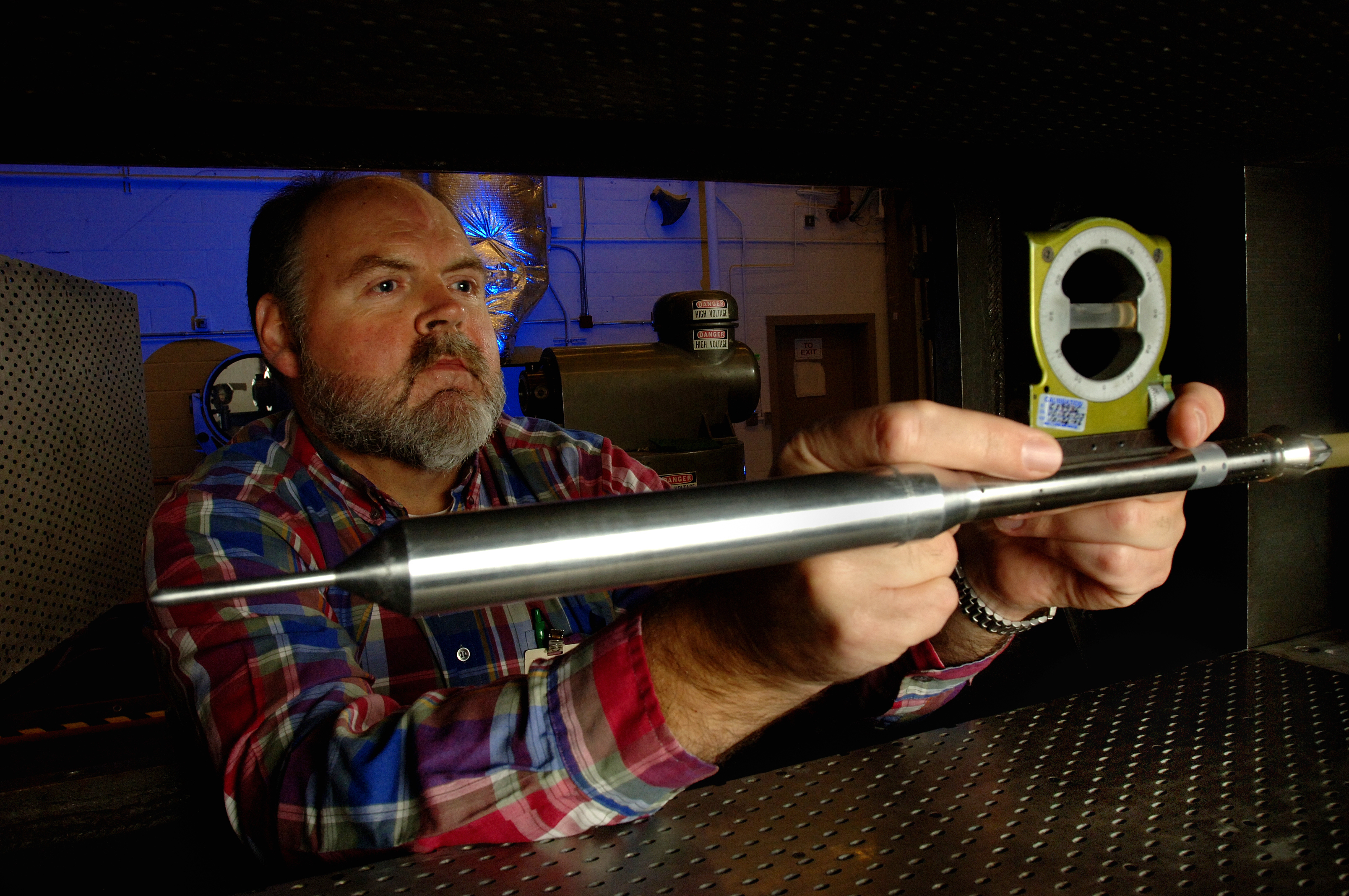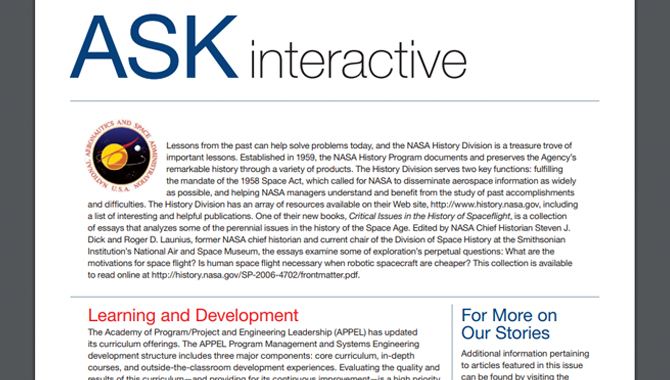By Dr. Michael D. Griffin
We at NASA have the unique privilege of carrying out an enormously challenging program of exploration and discovery on behalf of the American people.  The vision for Space Exploration, first announced by the president three years ago, has since become the law of the land with the passage of the NASA Authorization Act last year. The capabilities we are developing to satisfy the vision will enable us to explore new places, expand our understanding of the universe, and establish a human presence in other parts of the solar system.
The vision for Space Exploration, first announced by the president three years ago, has since become the law of the land with the passage of the NASA Authorization Act last year. The capabilities we are developing to satisfy the vision will enable us to explore new places, expand our understanding of the universe, and establish a human presence in other parts of the solar system.
The vision has given NASA its greatest mission statement since President Kennedy set the Apollo program in motion in 1961. Fulfilling our commitments to the International Space Station, retiring the Space Shuttle by 2010, and developing the Crew Exploration Vehicle and launch vehicles to carry out missions to the Moon, Mars, and beyond will require as much ingenuity, hard work, and sustained commitment as NASA has ever brought to bear.
The path ahead is difficult and risky to be sure. The next decade will present some of the greatest technical and management challenges NASA has ever known. Meeting them requires a solid organizational foundation that facilitates our ability to develop and successfully execute programs and projects. It is my responsibility to ensure that the Agency has a highly resilient management and governance framework, one that strikes a proper balance between flexibility and control, so we can thrive during this time of dynamic transition.
Governance in NASA refers to two things: oversight and approval of strategic, programmatic, and operational planning and the process for decision-making and appeals through the chain of command. The former manifests itself through the Strategic Management Council, the Program Management Council, and the Operations Management Council. Governance by council is reserved for matters in which decisions require high degrees of integration, visibility, and approval.
The latter is a natural feature of the way we are organized, in which the programmatic and institutional chains of command are clearly defined and intentionally separated until they reach the very top of the organizational chart. Generally speaking, decisions are the responsibility of line organizations, either programmatic or institutional. In some cases, where there is substantial disagreement, decisions will be appealed by one side or the other.
A good recent example is the launch decision for STS-121. In that case, programmatic authorities made the decision to launch, and institutional authorities appealed that decision in light of concerns about ice-frost ramp foam losses from the shuttle’s external tank. In that case, the appeal came to the level of the Administrator because agreement could not be found at lower levels. And my belief is that decisions of that magnitude deserve the attention of NASA’s top management, so our governance process worked well in that case.
It is necessary to have independent technical and programmatic lines of command at NASA, because there will always be a healthy tension between the programmatic imperative to accomplish tasks within cost and schedule and the technical imperative to do things perfectly, regardless of cost or schedule. Without this organizational separation, one imperative or the other must dominate, always to the detriment of either the project or the institution. This separation preserves the valid viewpoints of both, to the benefit of the program and the institution. This approach restores our ability to provide independent technical review of programs.
A central organizing principle of our work is that the people of NASA must assume the primary responsibility for making the vision for Space Exploration come to fruition. We are undertaking a multigenerational program of sustained exploration, and our intellectual capital should remain in house, where we can sustain the program’s momentum and retain an institutional memory of the system, the cost trades that are made, and why the architecture is the way it is. Making our own engineers clearly responsible and accountable for our technical products at the system level will drive our team toward excellence.
Having decided this, we want to provide our engineers with sound requirements and processes that help them execute mission objectives with careful and sober attention to risk. First and foremost, we will continue to encourage our people to speak up whenever they have safety concerns. And through the governance framework we will listen to and respond to those concerns.
Since NASA is a highly decentralized organization that requires flawless integration of its complex systems, a uniform approach to program and project management is essential if we are to achieve the kind of technical excellence that is necessary to execute our long-term exploration program successfully. The same holds doubly true for systems engineering. I have said many times since joining NASA that we need to do better in this area. The requirements and processes spelled out in NPR 7120.5D and NPR 7123.1 are steps in the right direction for these disciplines. Through efforts to strengthen our governance model, policies, and processes, we are working to establish standards of technical excellence that will enable a program of the complexity and promise of deep space exploration to move forward over a period of decades. It is a personal priority of mine to work with the senior management team to make sure that our organization enables the workforce to excel as it undertakes the tremendous tasks before us.








